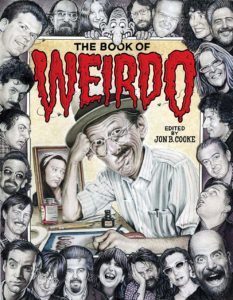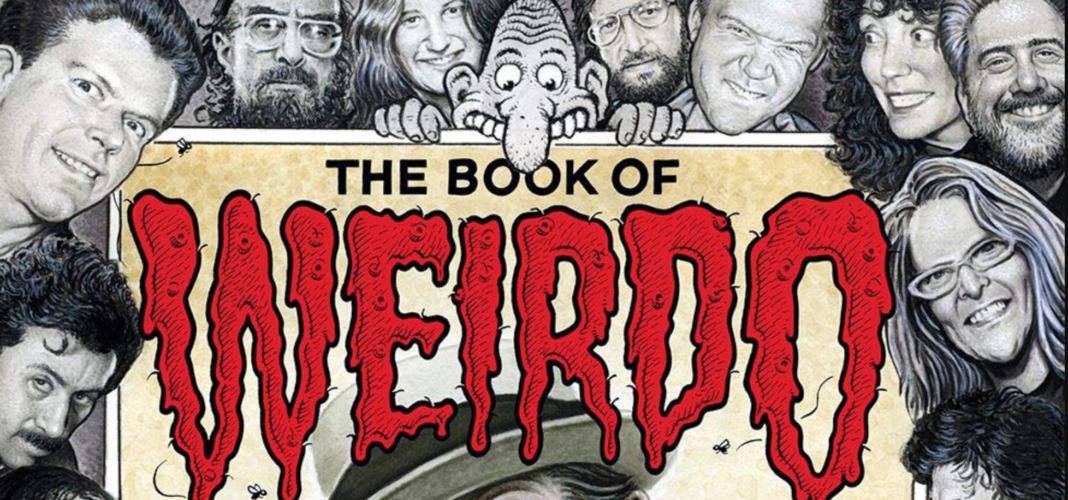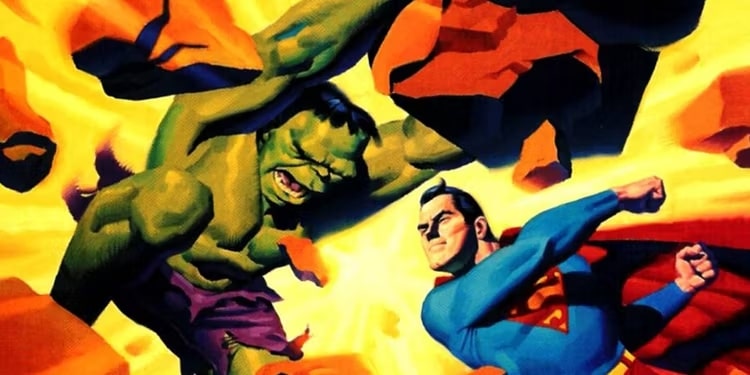
Earlier this year, Last Gasp published a handsome collected edition of testimonials, artwork, and stories edited by comic historian and writer Jon B. Cooke (who also happened to be awarded an Inkpot Award at this year’s San Diego Comic-Con International). The panel that gathered in San Diego to talk Weirdo represented a cross-section of talent that contributed to the magazine and molded it into the singular entity that continues to fascinate (and probably disgust) readers to this day. Panelists included a veritable who’s who of underground comix royalty, including Mary Fleener, Carol Kovinick Hernandez, Gilbert Hernandez, Krystine Krytte, Kaz Prapuolenis, Bruce Carleton, Ron Turner, and of course, Cooke.
The panel opened with a surprise announcement. Cooke, barely containing his excitement, brought up Karen Green, the Curator for Comics and Cartoons at Columbia University, to announce that Weirdo’s original editors—Crumb, Peter Bagge, and Aline Kominsky-Crumb—would be appearing at Columbia in October.
Once that was out of the way, the panelists delved into working for Weirdo. It was apparent from the start that, though the anthology has stopped producing new issues for almost three decades, it still holds an affecting place in the hearts of those who contributed.
“I saw Weirdo on spinner rack,” recounted Cooke. “The covers [were] beautiful, the inside was ewwww. I was pulled in by Crumb’s stuff. I admired the magazine. Plus, I couldn’t afford RAW.”
For Fleener, Weirdo was a “natural progression of the underground movement. It was a whole new group of people and artists, but it also was so campy. It was more punk rock than punk rock music: total anarchy.”

For Hernandez, “Love and Rockets was the do-gooder mag, and Weirdo became the ‘bad’ magazine. I liked the freedom and anarchy of Weirdo. RAW was the opposite. Weirdo was anything goes… and it was fun to read!”
From there, the panel explored how The Book of Weirdo was put together. Over the course of decade plus, Cooke slowly gathered material by interviewing Crumb and Kominsky-Crumb, as well as by gaining 130 testimonials from individuals who worked on the magazine. “I was amazed by the enthusiasm with everyone I dealt with,” Cooke said.

Kryttre recalled a time that she met Crumb at an art opening and made the mistake (though she didn’t know it at the time) of mentioning how much she admired Prapuolenis’ work. “He’s an asshole!” Crumb remarked. The audience (and Prapuolenis) roared with laughter at this anecdote. Kryttre ended her remarks by adding that Crumb and Kominsky-Crumb are most generous with their time and that: “Crumb is not as nasty as he tries to depict himself.”
What was completely clear by the end of the panel was how much respect and love cartoonists had for an outlet that let them express themselves in unconventional ways. The Book of Weirdo, as a retrospective, allowed many of them to re-explore those experimental days. It was a touching reminder of the power of this medium to rebel against authority while also fostering creative reflections of reality. Reality which, oftentimes, is extremely weird.









Does The Book of Weirdo reprint Robert Crumb’s notorious strip from issue #28? I heard at the time that even some of Crumb’s contemporaries thought he went too far. And as predicted, the strip was pirated and reprinted in white supremacist publications. The New Yorker wrote about it in 1994. https://www.newyorker.com/magazine/1994/11/14/when-comics-aren-t-funny
Comments are closed.